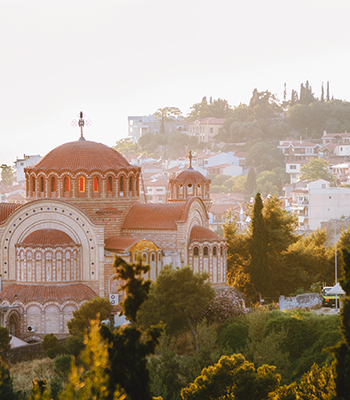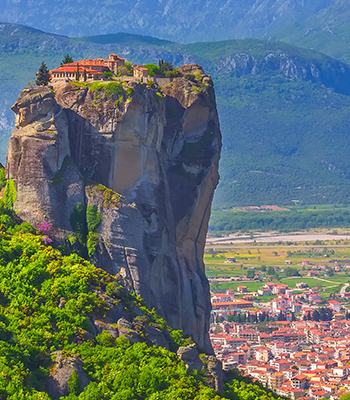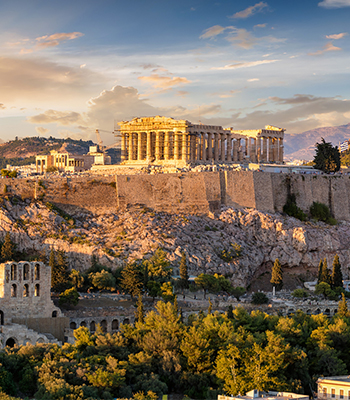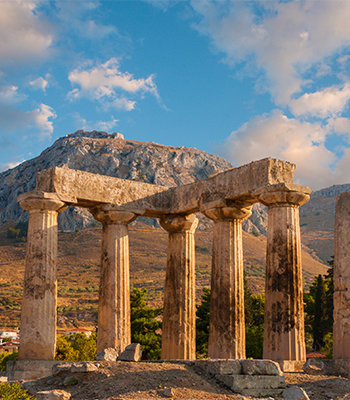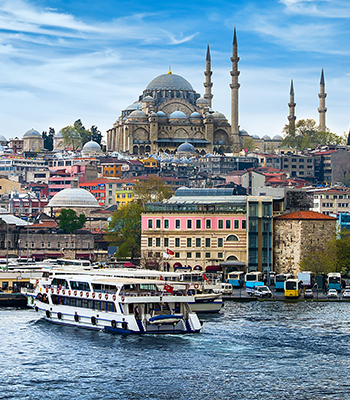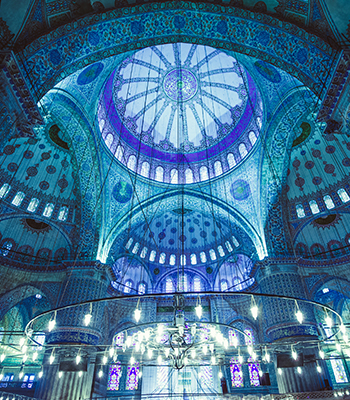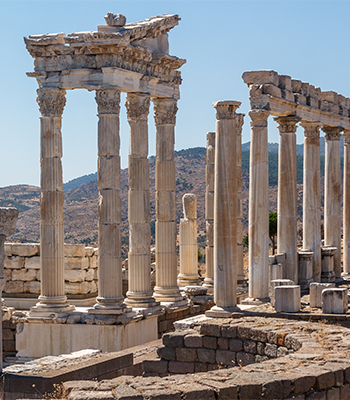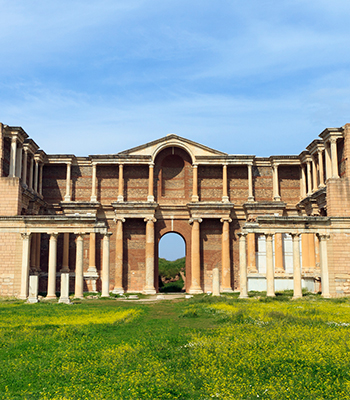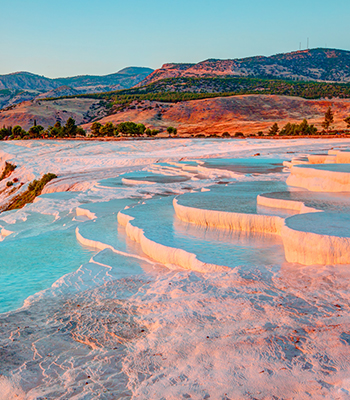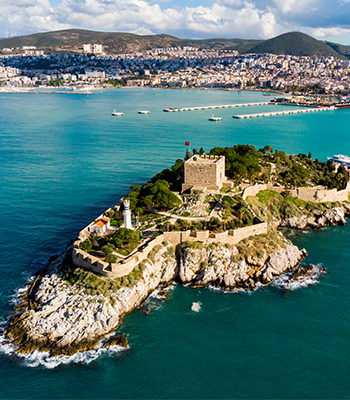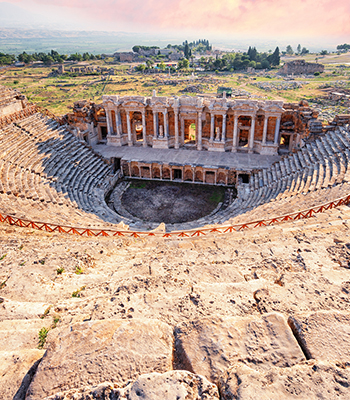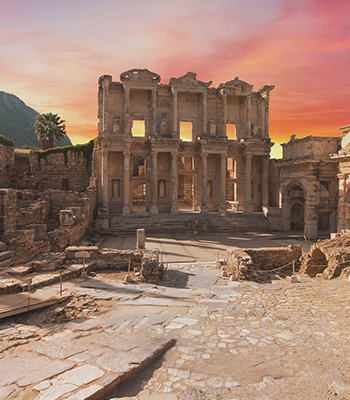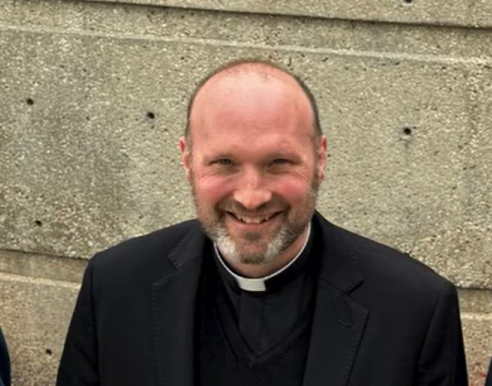The Seven Churches of Revelation Walking in the Footsteps of Paul
Greece & Turkey
October 7 – 19, 2025
Especially designed for
St. Mark the Evangelist Church
Plano, TX
Space is limited. Register today!
Use group code 25011 to register for the pilgrimage online.
For instructions on how to register, click here.
Fr. Jason Cargo & Deanna Flanagan
Co-hosts
Itinerary
Day 1: Tuesday, October 7, 2025: Depart USA
- Depart by scheduled airline service. The destination is Thessaloniki, Greece.
Day 2: Wednesday, October 8: Thessaloniki
- Welcome to Thessaloniki! You will be met at the airport, on arrival, and transferred to your hotel. Take the remaining time of the day to discover Thessaloniki! A vibrant city rich with history and mythology, enlivened by bustling outdoor cafes, pedestrian streets that wind through the city’s numerous stores and its fair share of urban eccentrics, a city full of contrasts. Time permitting, Celebrate Mass at the Catholic Church (pending conformation). Overnight in Thessaloniki.
Day 3: Thursday, Oct. 9: Thessaloniki, Philippi. Lydia, Neapoli
- This morning we will have a tour along the ancient route of Apostle Paul to Amphipolis (Acts 17:1). Journey to ancient Philippi, which was named after the father of Alexander the Great. This busy Roman colony boasted a great library and theater. In Philippi, Paul preached, established the first church in Europe, and was to whom he wrote one of his epistles while imprisoned in Rome (Acts 16:11-40; Philippians). It was in this area that Paul met Lydia, a dealer in purple cloth. She and her household accepted Christ and were baptized in the nearby river (Acts 16:11-15). Celebrate Mass at the Baptistery of Lydia (pending confirmation). Next, continue to Kavala, ancient port of Neapolis (Acts 16:9-11). Return to Thessaloniki for a city tour where admire the Byzantine city walls, the white tower, the triumph arch of Galerius and the Rotunda. We will view the Roman forum, the church of St. Demetrius, who is the patron saint of the city. Dinner in our hotel
Day 4: Friday, October 10: Thessaloniki, Veria, Dion, Kalambaka
- (Acts 17:14-15)”And then immediately the brethren sent away Paul to go as it were to the sea…” This morning we will drive to Veria (Beroea of the New Testament), where Paul and Silas were sent by friends after being accused of treason in Thessalonika (Acts 17:5-15). Visit the Bema of Apostle Paul where is said to have stood and preached the Gospel. Mass will be said in an outdoor venue near the site. Then continue to visit Dion, which was the sacred city of the ancient Macedonians. It was from the port of Dion that Apostle Paul possibly sailed to Athens. Dion is an extensive archaeological park. Its museum houses some of the rarest and most unique statues, reliefs and inscriptions. We will also see some of the most well preserved ancient roads and walls, two early Christian basilicas and finally a few Christian houses and shops of the time of Ap. Paul. Afterwards our trip will take us to Kalambaka, at the base of “Meteora”, which has been characterized by Unesco as a “unique phenomenon of cultural heritage”. These rocky formations are littered with Byzantine monasteries (14th – 16th century A.D.). Overnight stay in Kalambaka.
Day 5: Saturday, October 11: Meteora, Kalambaka, Athens
- Our morning will begin with a brief sightseeing of Meteora and a visit to one of the oldest monasteries this beautiful place has to offer. If possible, celebrate Mass at Meteora. Then we will take our way to Athens passing by Thermopylae which was famous for its 480 B.C. battle between the ancient Spartans and the Persians. Overnight in Athens.
Day 6: Sunday, October 12: Corinth, Athens
- We will leave Athens for Corinth early in the morning (Acts 18:1-8). Once there, we will begin our tour with the “Canal” and explain, in detail, why Corinth was such a wealthy center in the days of Ap. Paul. Celebrate Mass at the Catholic Church (pending confirmation). We will then visit the archaeological site and walk through the Roman forum where the “Bema”, otherwise known as the judgement seat of Gallio, is situated. We will talk about head covering, women in the church, and “the fountain of living waters”, presenting you with details and little-known facts. Afterwards we will see the “Erastus” inscription and talk about its meaning, its background story and its role in the history of Ap. Paul in Corinth (Romans 16:23). We will go to Kechries (Cenchreae) , where Paul had shaved his head and from there he sailed to Syria ( Acts 18:8) we will view this port. Return back to Athens, (Acts 17:16-34)”Now while Paul waited for them at Athens, his spirit was stirred in him, when he saw the city wholly given to idolatry…” we will have a sightseeing tour of Athens, which includes the house of parliament, the ancient Olympic stadium (a.k.a. Kallimarmaron, Panathenaic Stadium), the temple of Zeus and the Hellenic Academy. We will then go to the Acropolis hill and visit the world famous Parthenon and the Erechtheion. We will continue to the nearby Ares Rock (Areopagus – Mars Hill) where Ap. Paul gave his well known sermon (Acts 17:16-34). On this historic place, having a very good view of the modern city of Athens, we will have the possibility of prayer for Greece. From this point we will see the Athenian Agora which was the center of the ancient city where Ap. Paul met with the Epicurean and the Stoic philosophers. Overnight stay in Athens.
Day 7: Monday, October 13: Departure from Greece to Turkey
- If all of the sights were not visited on the day before, it may be possible to visit them this morning, depending on the flight schedule. Departure from Athens Airport to Istanbul. Upon arrival to the Istanbul Ataturk Airport, we will meet our guide in the arrivals hall and head to our hotel located near Taksim Square, the bustling heart of modern Istanbul. Celebrate Mass at St. Esprit Cathedral (pending confirmation). Dinner and Overnight in Istanbul.
Day 8: Tuesday, October 14: Istanbul
- After enjoying our Turkish breakfast, we will depart from our hotel and begin our tour of the historical highlights of Istanbul. First, we will celebrate Mass at St. Esprit Cathedral (pending confirmation). Following Mass, stroll through Hippodrome Square, the former sporting and social center of Constantinople that hosted chariot races during the Roman period. Afterward, we are off to witness the incredible majesty and splendor of the Sultan Ahmet Mosque. Popularly known as the Blue Mosque, this 17th-century Ottoman sanctuary is adorned with six minarets and more than 20,000 hand-painted Iznik tiles. And then we will walk directly across from the mosque to visit the domed masterpiece of the Hagia Sophia before. Then, Old Constantinople hide: Byzantine Cisterns! Built by Justinian the Great in 6th century AD to reserve water against the threats of siege, The Sunken Cistern, as what the locals name it, is a unique edifice composed of 336 pillars quarried from the ancient Roman temples. we will end our day with an evening of shopping at the Grand Bazaar, the massive covered market that houses a labyrinth of streets lined with shops selling jewelry, leather products and many other handcrafted souvenirs.. Dinner and overnight in Istanbul.
Day 9: Wednesday, October 15: Istanbul, Thyatira, Pergamum, Izmir
- We will drive to Akhisar and end our day with a visit to Thyatira, one of the Seven Churches praised for its increasing faith but admonished for its tolerance of Jezebel (Rev. 2:18-28). Continue to the town of Bergama to visit Pergamum, one of the most powerful cities in the ancient world. The city rose to prominence following the death of Alexander the Great in 323 B.C. and eventually came under Roman control in 133 B.C. Although this city benefited from immense wealth, in the Book of Revelations, the risen Christ instructs John to convey the message that the people of Pergamum, the site of “Satan’s throne”, needed to repent (Rev 2:13-16). Today, we will tour the Acropolis which sits atop a 1000-foot windswept mountain, offering a view of the neighboring modern towns, the azure waters of the Aegean, and the ruins of Pergamum that cascade down from the ancient city center. Here, we will explore the Temple of Trajan, Temple of Athena and the Altar of Zeus. Unfortunately, little is left of the altar, which was once among the grandest monuments of the ancient world. In fact, every stone of the structure, including its 400-foot-long frieze depicting the battle of the gods and giants, was shipped off to Berlin by German archaeologists leaving only the altar’s foundation. Thankfully, much more remains of the Great Theatre. Among the steepest of its kind and an acoustic phenomenon, this theatre could entertain up to 10,000 spectators. Nearby are the remains of the famous Library of Pergamum. Once housing some 200,000 scrolls, the library’s collection even exceeded that of the great library of Alexandria before Mark Anthony gave it to Cleopatra as a wedding gift. Private Mass will be celebrated at Izmir. Dinner and overnight in Izmir.
Day 10: Thursday, October 16: Izmir, Sardis, Philadelphia, Laodicea, Pamukkale
- This morning, we will visit the archaeological remains of the ancient city of Smyrna. Located in modern-day Izmir, Smyrna was one of the Seven Churches that the Apostle John relays the promise from God: “Be faithful until death, and I will give you the crown of life” (Rev 2:10). Afterwards, we will visit Sardis, a militarily strong ancient city located along an important highway and among the fertile plains of Hermus (Geldiz River). Though Sardis was a powerful and wealthy city with a reputation for being alive, God announced that it was actually dead (Rev. 3:1-6). Here, we will explore the white marble royal way, the massive Temple of Artemis, the large gymnasium, and the famous synagogue. Annual archaeological expeditions sponsored by Harvard and Cornell Universities have unearthed over eighty Greek and seven Hebrew inscriptions as well as numerous mosaic floors revealing this synagogue as one of the most significant synagogues of antiquity. Afterwards, we will head to the modern town of Alasehir and visit the site of ancient Philadelphia, the church that received God’s highest commendation (Rev. 3:7-13). Here, we will see the remains of a brick-built Byzantine Basilica adorned with 11th-century frescoes. En route to Pamukkale, we will visit the ancient city of Laodicea. This city was one of the Seven Churches that the Apostle John chastised the inhabitants for being lukewarm (Rev. 3:14-22). Celebrate Mass at Laodicea Church (pending confirmation). Here, we will also see the site’s well-preserved stadium, gymnasium, and theatres, giving us insight into this city’s former prominence. Dinner and Overnight in Pamukkale.
Day 11: Friday, October 17: Pamukkale, Hierapolis, Kusadasi
- Today, we will visit Pamukkale, “Cotton Castle”, and dip our feet in the thermal waters that flow down the hilltop’s unique white travertine terraces. Here, we will also visit the archeological remains of Hierapolis, a significant site of early Christianity thanks to Paul’s missionary efforts here (Colossians 4:13). Because the city sits atop the travertine cascades of Pamukkale (a UNESCO World Heritage Site), Hierapolis became a healing center wherein the site’s thermal pools were used to treat various ailments. Today, we will stroll among several important ruins including well-preserved Roman structures like the town theatre and Temple of Apollo before continuing on to Ephesus. Located in the modern town of Selcuk, ancient Ephesus is one of the most well-preserved archaeological sites in Turkey. Originally an ancient Greek Ionic city built in the 10th century B.C., Ephesus grew to become the largest metropolis and capital of the Roman province of Asia Minor. This political influence and the city’s large Jewish community attracted the attention of the apostles, including Paul. Here, he carried out his mission for two years and was Bishop of the Ephesian Church before he was exiled to Patmos. Today, we will walk on the Marble Road passing numerous historically rich sites including the Temple of Artemis (Diana), the fountain of Trajan, and the Temple of Hadrian. We will also see the Library of Celsus, which adorns the site’s most impressive square, and sit in the theater (the largest surviving from the Roman period). This massive theatre (capable of entertaining up to 25,000 spectators) was the scene of an uprising provoked by a merchant named Demetrius against St. Paul and his teachings (Acts 19:23). Then, we will end our day at the House of the Virgin Mary, the site where the mother of Jesus is believed to have spent the last days of her life with the Apostle John. Celebrate Mass at the House of the Virgin Mary (pending confirmation). Overnight in Kusadasi.
Day 12: Saturday, October 18: Ephesus, Kusadasi
- Today, we spend another day in Ephesus exploring the history and significance of past. Visit the ruined Basilica of St. John, built in the 6th century. If possible, Celebrate Mass at the Basilica of St. John (pending confirmation). The site marks the traditional burial place of the Apostle John. Next, travel to the Scholastica Baths. The last stop will be the Cave of St. Paul, where St. Paul and the Virgin Mary first stayed when they arrived in Ephesus. Some time will be set aside for prayer and reflection. In the afternoon, enjoy some free time to explore the region. In the evening, return to Kusadasi for a special celebration dinner and overnight hotel stay.
Day 13: Sunday, October 19: Depart
- Today, we transfer to the Izmir Airport where we can fly back home.

